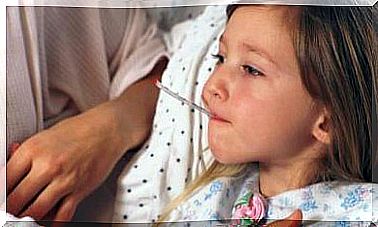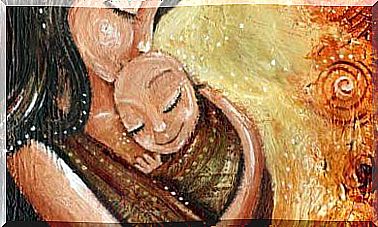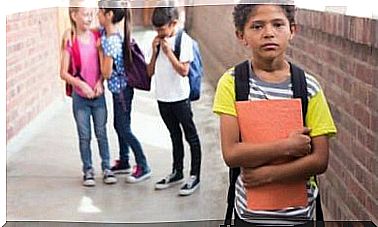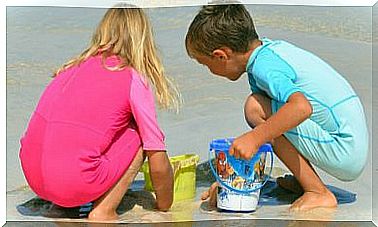How Do I Teach My Child What Danger Is?
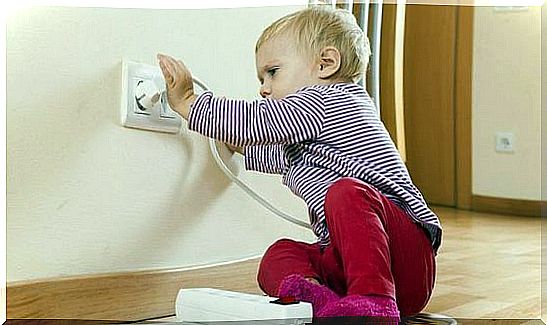
When the child begins to move, either through the use of the walker, through crawling or taking his first steps, the enemy of every mother begins to appear: Danger and with it, worries, scares and bad drinks.
It is not strange to see mothers and fathers running after their children, exercising continuous monitoring in order to save these mini kamikazes from all kinds of bumps and falls due to the characteristic clumsiness of their initial movements. Against all maternal concerns, minors do not know how to smell it or appreciate it.
It is completely understandable considering that their curiosity and desire to discover the world are stronger than their fears and lack of motor tuning : for them it is better to take risks to know and play.
For this reason, it is essential not only to protect the child from possible accidents and guide them in risky situations, but also to teach them what danger is, but how to make them grasp that notion? Find out in this article.

Why doesn’t my child understand what danger is?
According to the vision of psychologists, the first structures developed in the brain are emotional, affective, sensory, motor, etc. And although the internalization of norms, the concept of danger, abstraction and behavior develop at a young age, their process ends at 18 years of age.
It is worth clarifying that between the ages of 10 and 12, through abstract thinking, the child already has the ability to anticipate risk. But this will always depend on the environment, the education received and, specifically, the information given to the child regarding the dangers of everyday life.
Teaching danger is not reaping fear
Sometimes it is impossible to avoid danger in children who have inexhaustible energy and motivation fueled by voracious curiosity and mastery of new psychomotor skills, which is why they seem strangely seduced by risk and difficulty.
Therefore, the ideal would be to be vigilant to anticipate what could happen, in order to avoid accidents or unnecessary scares. This means keeping an eye on your child all day and avoiding leaving him alone. When danger presents itself, take the opportunity to explain where it is and what may happen.
It is not about frightening the little one, but it is not bad to teach him some basic safety rules, so that he himself understands the consequences of such cases and stays away from danger. Be patient because even if he does not speak, he understands you, and insistently will give the sweetest fruits.
On the other hand, other mothers choose to adapt the house with child-proof safety measures : safety closures on windows, fences for stairs and terraces, plug and corner protectors, are some tools.
And what if you lock up medicines and hygiene and cleaning products? In the same way, to avoid danger, you can clear obstacles from the baby’s path inside the house, although all measures will not guarantee 100% a forehead without bumps or a body without bruises.
A lot of attention! In the desire to care for your child, you should not become an overprotective mother, since infants have to learn by themselves and not be limited by excessive parental care. Of course, all these tips are intended for the boy not to be reckless or fearful, but to be cautious.

The arrival of the notion of danger with growth
Once the minor reaches 5 or 6 years of age, he achieves a greater knowledge of the world and the risks it entails. This understanding of danger begins to develop with various unfortunate experiences such as a fall and its association with pain or when they feel lost and experience feelings of anxiety.
That is why specialists indicate that the child does not learn that something is dangerous until a fairly advanced stage, they even avoid risky activities not because they know what the danger is but rather so as not to experience pain again.
Between the ages of 10 and 12, the frontal lobes and the capacity to inhibit impulses develop, giving rise to the knowledge of more abstract concepts and, with them, the idea of danger through practical intelligence.
Experts agree that the best way for children to assimilate these concepts and notions is by relying on clear and concise explanations, not on long, boring and exaggerated dialogues, in the same way that you should bet on games and symbols.
Likewise, in order to indicate possible consequences calmly and without alarming them, another strategy is to resort to the wealth of examples in the rounds, stories and programs since they always present a moral anchored in reality, with which the child can internalize those alien but familiar emotions.
How do I teach you what danger is?
According to mental health professionals, children need to know the world for themselves while parents must limit themselves to acting as support, minimizing risks and avoiding accidents. To do this, we present these guiding guidelines:
- Teach your child to stay calm.
- Nurture self-confidence for your little one to explore his environment on his own.
- Explain the meaning of the danger.
- Show him the consequences of his behaviors.
- Explain with clear examples how to avoid dangers.
- Use games and fables to show him what can be dangerous.





